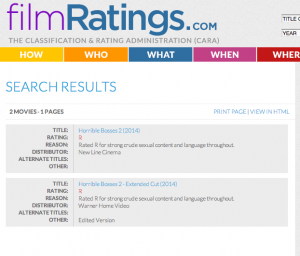The MPAA: 50 Years of Movie Ratings
Posted on December 9, 2018 at 10:46 pm
It took a little time but, over the decades, the rating system gained credibility and acceptance with audiences. And this month, as we celebrate the system’s 50th anniversary, it remains the gold standard of voluntary industry self-regulation.
Given the extraordinary changes in our culture, entertainment, and society over the past half century, this anniversary feels particularly hard-earned and special. And if you can measure success by how long it has lasted, then I agree with The Center for Association Leadership which recently called the ratings system “the most famous association initiative of all time.”
We could point to many factors behind that success. But the clearest one of all comes directly from its founding mission: to maintain the trust and confidence of American parents.
I have often complained about the MPAA rating system, but Rivkin is right that it was a huge improvement over the Hays Code, which literally set a time limit for kisses and forbade portrayal of clergy as incompetent or corrupt — and, most importantly, required all movies to be suitable for all audiences. We look forward to continued refinements over the next half century.

